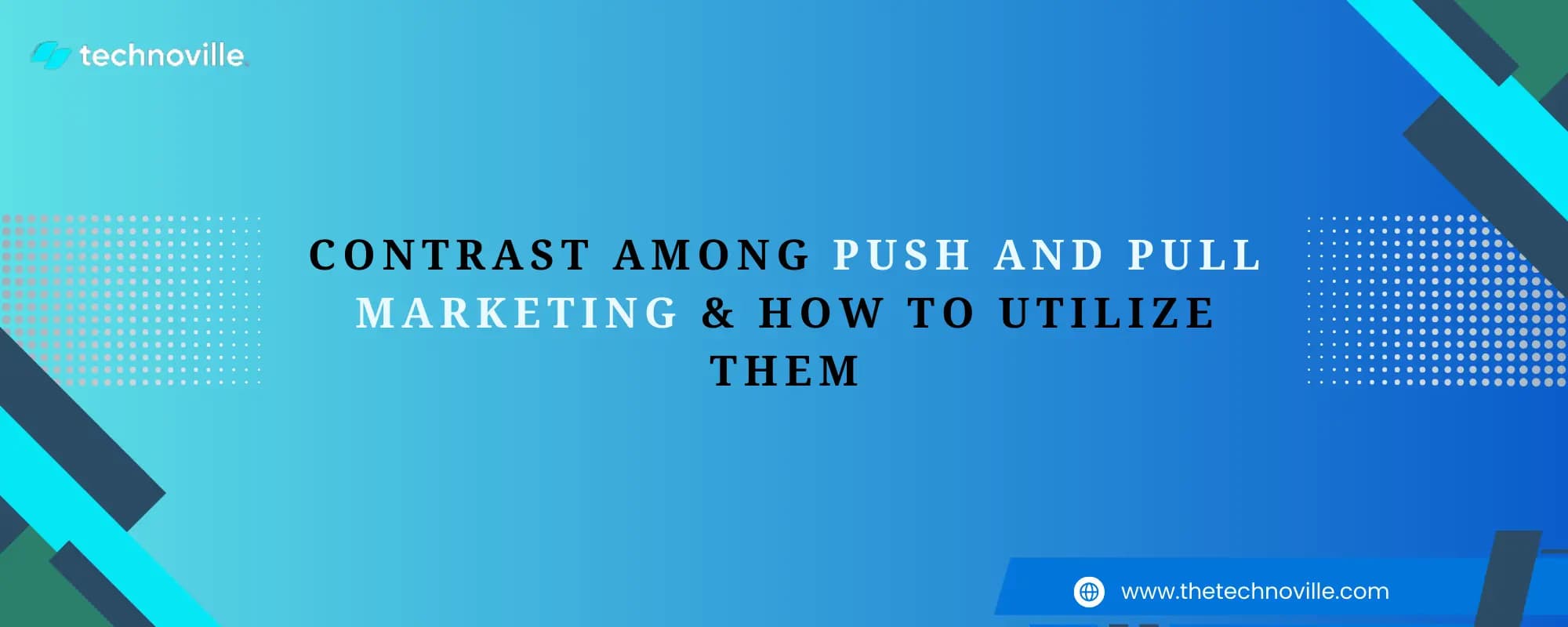Contrast among Push and Pull Marketing & How to utilize them

Push and Pull marketing are two fundamental principles of online marketing strategies. For any online business or brand, it is very important to balance your time, budget, and contribution to growing your business. You can choose to develop your business organically or by using paid strategies. To start with the marketing plan you need to establish your business’s long and short-term goals. Usually, to generate immediate cash flow, “push” marketing strategies focusing on paid ads are implemented. For organizations who wish to acquire a long-term client base, a “pull” marketing method is applied to offer organic long-haul development.
What is Push Marketing?
Push advertising is a technique that is accustomed to bringing your business or products to your crowd. Push marketing is aggressive in comparison to alternative marketing strategies. For instance, you can float your products through push marketing on social media at a price. Push marketing is also known as direct marketing which is a type of general advertising. It is generally used by businesses looking for quick sales. The other side of push marketing is that in most cases it involves spending money. It includes one of the most preferred forms of push marketing, pay-per-click (PPC) marketing. PPC is executed by placing search engine ads, banners, display advertisements, shopping ads, and more on various online channels. These advertisements charge a certain amount each time someone clicks on them.
What is Pull Marketing?
Pull marketing on the other end focuses on attracting traffic in an organic method. The focal point of the process is to create high-value content which are eligible for your target audience and attract them to your business. Pull marketing targets long-haul associations with the client. This marketing tactic includes advertising, mass media promotions, verbal promotions, and sales promotions. Implementing these activities will help you get potential consumers curious about your products and services.
Which One is More Effective?
To understand which marketing strategy suits your business you need to take a call about how you wish to approach your audience. If you wish to make a brand buzz in the market about a specific service or product, a pull marketing strategy will be beneficial. If you want to share your presence with your audience, push marketing will most likely be a good idea for your business.
Push marketing does have some downsides. As push marketing concentrates on short-term sales, developing brand loyalty becomes tough. Along with that to maintain a promotional campaign, you may have to spend a good amount of money for advertising reasons. And there may be fair chances of spam problems in case you demonstrate your ads everywhere. Such issues might create a damageable impression.
When it comes to pull marketing, the only issue is that you may not be able to connect with a wider base of customers. This occurs as you anyways know your objective market. And so your advertisements about specific products or services won’t be visible to audiences outside the targeted bunch.
Push and Pull marketing tactics can be implemented together as well. Your audience will need a push to create the demand and at the same time, pull marketing will help you fulfill their demands. To create brand awareness among your audience you need the push marketing method. And you can pull those looking for your services or products. Based on your push and pull objectives, you can make use of both these marketing strategies. To get a better idea about which strategy is better for your business let’s check out some examples of push and pull marketing.
Push Strategy Examples:
Display ads
You can run display ads on platforms particularly offering paid advertisement services. You can also choose to execute banner ads which is a form of display ads. Even social media channels provide display ads. You can create these ads and share them further.
Billboards
Billboards and hoardings are one of the most effective ways of branding your products and services to the maximum number of people possible. These billboard campaigns are situated in high-traffic regions to draw in whatever number of individuals would be prudent.
Direct marketing
Direct marketing is a promotional method where you can directly communicate with the audience about your business. You can also distribute samples of your product or share information about your services directly with individual consumers.
Pull Strategy Examples:
Social media marketing
Except for the paid advertisements used for push marketing on social media channels you can also opt for other methods of social media marketing for pull marketing. You can promote your business through videos of your product, influencer content, interesting artworks, and co-marketing endeavors on social media.
SEO
To get your audience to come across your business content and web pages, you must implement SEO strategies. Your content must include relevant keywords, terms, and phrases. When you understand what your ideal interest group is searching for, you can optimize your site and website pages with relevant keywords and terms. This will help you reach your audience organically without being too pushy.
Blog
One of the most effective ways of educating your audience is by giving them knowledge about your business. Your customers need to understand the usage of your products or services, informed buying decisions, updates about the product, insights into the evolution of the industry. To get your audience to reach your blog organically you must optimize the blog based on SEO strategies.
Push and pull marketing are cut out of the same cloth. Both these promoting systems can be compelling depending on your objective and both are equally significant with regard to effective marketing efforts.